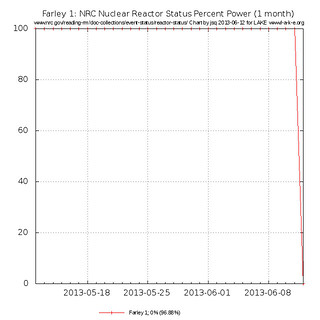California only has a couple of nuclear reactor locations (unlike the
32 reactors within 500 miles of here),
and one is in even worse shape than the other: San Onofre,
almost as bad as
Crystal River.
I’m sure Southern Company would never cut corners or have
design or
construction problems at Plant Vogtle, right?
Harvey Wasserman wrote for AlterNet 7 January 2013,
Showdown at San Onofre: Why the Nuclear Industry May Be Dealt a Big Blow,
Perched on an ocean cliff between Los Angeles and San Diego, the
 reactors’ owners cut unconscionable corners in replacing their
multi-million-dollar steam generators. According to Russell Hoffman,
one of California’s leading experts on San Onofre, inferior metals
and major design failures turned what was meant to be an upgrade
into an utter fiasco.
reactors’ owners cut unconscionable corners in replacing their
multi-million-dollar steam generators. According to Russell Hoffman,
one of California’s leading experts on San Onofre, inferior metals
and major design failures turned what was meant to be an upgrade
into an utter fiasco.
Installed by Mitsubishi, the generators simply did not work. When
they were shut nearly a year ago, tubes were leaking, banging
together and overall rendering further operations impossible.
Southern California Edison and San Diego Gas & Electric have
unofficially thrown in the towel on Unit 3. But they’re lobbying
hard to get at least Unit 2 back up and running. Their technical
problems are so serious that they’ve asked the Nuclear Regulatory
Commission to let them run Unit 2 at 70% capacity. In essence, they
want to “see what happens” without daring to take the
reactor to full power.
The NRC has expressed serious doubts. On December 26 it demanded
answers to more than 30 questions about the plant’s technical realities.
There have been assertions that unless San Onofre can be shown as operable
at full power, its license should be negated.
It’s good the NRC got around to doing something, after
Continue reading →
 Safety at Plant Vogtle, this Wednesday, with call-in number, by
NRC and Georgia Power’s parent the Southern Company.
One hour from 1 to 2PM is the public part, then 3 more hours closed
“because the staff has determined that the
information is proprietary in nature.”
Why is nuclear testing affecting public safety proprietary?
Safety at Plant Vogtle, this Wednesday, with call-in number, by
NRC and Georgia Power’s parent the Southern Company.
One hour from 1 to 2PM is the public part, then 3 more hours closed
“because the staff has determined that the
information is proprietary in nature.”
Why is nuclear testing affecting public safety proprietary?










